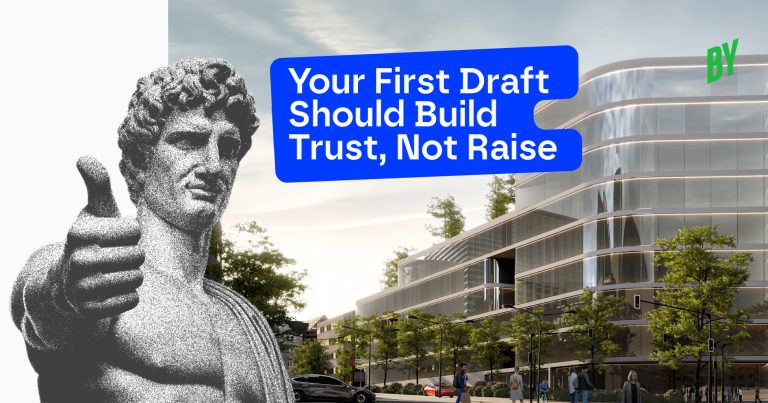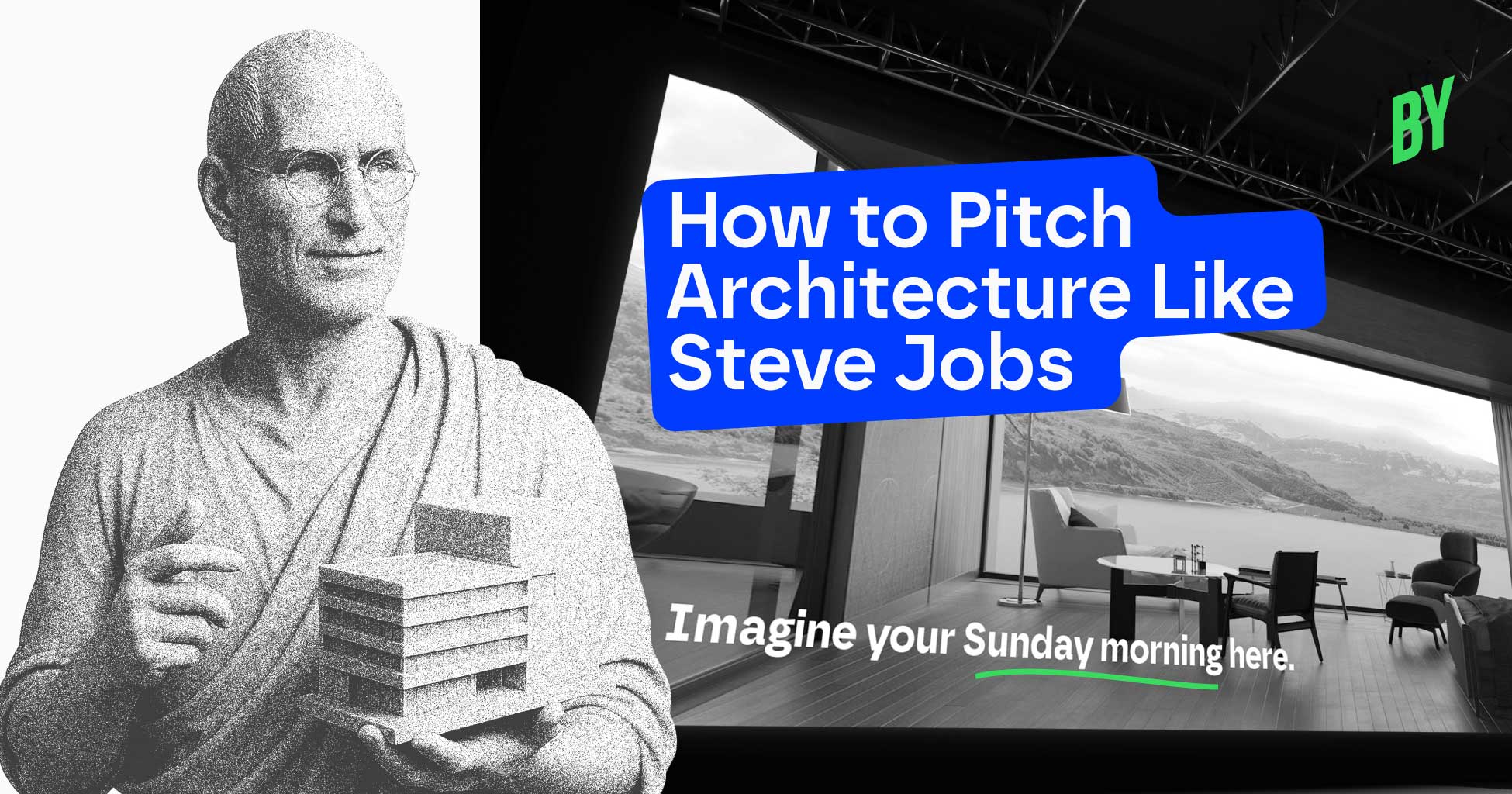Why This Blog Exists
Architects don’t just design. They pitch. But most pitches sound like folder walkthroughs—not like product launches.
Steve Jobs never showed a product. He revealed a story. A feeling. A future.
And if you want your design to be understood, felt, and approved—you need to learn what made him the master of persuasion.
This is not about black turtlenecks and dramatic pauses. This is about the mindset shift from “here’s what we designed” to:
“Here’s what your future could feel like.”
Let’s study Jobs—not as a tech guy, but as the ultimate storyteller. And let’s talk about how to bring that into the way you present architecture.
Act I: He Didn’t Start with a Product. He Started with a Feeling.
Jobs never opened with specs. He didn’t show processors, battery life, or ports.
He started with a vision. He painted a picture of what your life could feel like with the product.
As an architect, ask yourself:
Are you showing floor plans—or are you showing what it feels like to live inside them?
Start with one bold image. One emotional sentence. One moment they can picture.
“Imagine your Sunday morning here. Barefoot, warm floor, filtered light across the kitchen counter.”
Because if they don’t feel it in the first 10 seconds… you’ve already lost them.
Act II: He Framed the Problem, Not the Feature
When Jobs introduced the iPhone, he didn’t say:
“It has a multi-touch screen and mobile browser.”
He said:
“We all hate our phones. They’re clunky, slow, and hard to use.”
That’s where the hook is. In shared frustration.
What does that mean for your pitch?
Don’t start with site setbacks. Start with their pain.
“You told us your current home feels dark. That your living room never feels alive.”
Now show how your design changes that.
“This wall opens up the morning sun. And it’s framed to catch golden hour every day.”
Act III: He Revealed, Not Explained
Jobs had a knack for unfolding a story. Slide by slide. Beat by beat.
He didn’t show all features at once. He walked you through an experience.
As an architect, walk the client through a day in the space:
- Morning coffee ritual in the balcony
- Midday light in the kitchen
- Guests laughing around the dining table
Let each render be a moment—not just a camera angle.
Act IV: He Made It Look Effortless
One deck. One voice. One format.
Jobs never switched tabs mid-presentation. Never said, “let me just pull this up from Drive.”
If you present like that, the story breaks. The belief breaks.
Don’t present in pieces. Present with presence.
Act V: He Always Had a Magic Moment
Jobs would always drop something unexpected:
“Oh—and it also has visual voicemail.”
Small surprises created massive delight.
In your pitch, use a detail that makes them lean forward:
“You may not notice it now, but at 4:43pm every day, the light catches this corner of the floor just right—like it was choreographed. A warm invitation to pause, sit, and read.”
Act VI: He Ended on Emotion, Not Execution
He didn’t close with spec sheets. He closed with impact.
You should too.
Don’t wrap up with construction logistics. End with the dream:
“This isn’t just a house. It’s where your next decade happens.”
Then let the final slide breathe. Let the render speak. Let them feel.
Final Act: He Left You with a Line You’d Remember Forever
One last punch. One unforgettable phrase. That’s what Jobs did.
“This isn’t just a building. It’s your story in built form.”
You’re not just explaining design. You’re shaping belief. And belief gets approvals.
Want to Build Your Presentation Like This?
Download our free resource: The Steve Jobs Style Deck for Architects
It’s a practical, slide-by-slide guide to structure your pitch like a product launch.
Save this post. Share it with your team.
And next time you pitch, ask yourself:
“Would Steve Jobs present it this way?”





